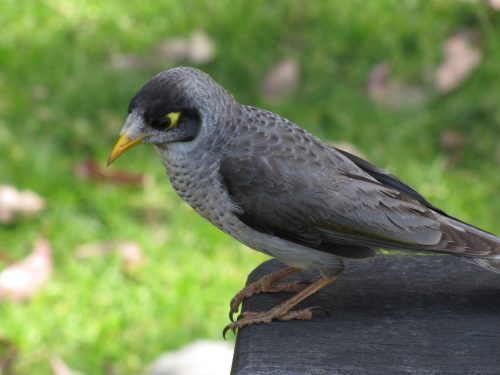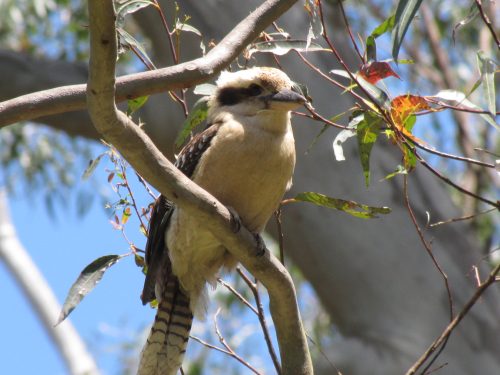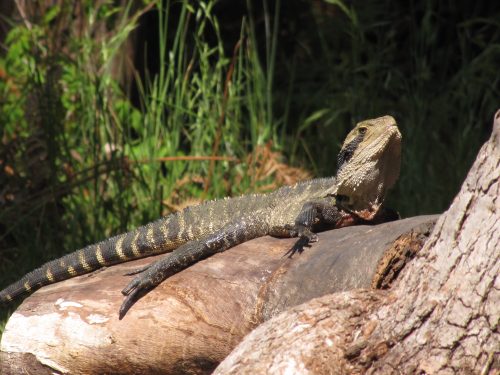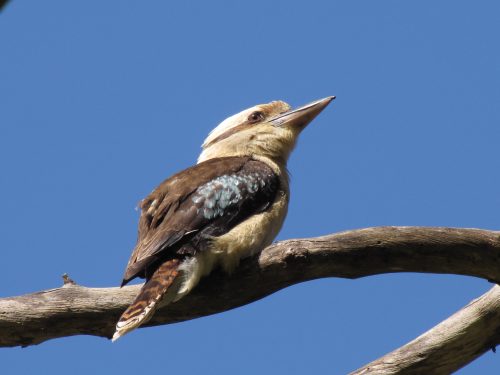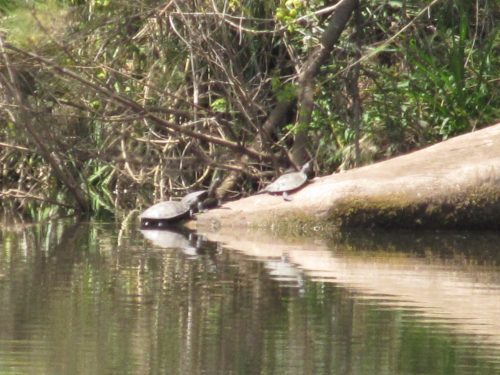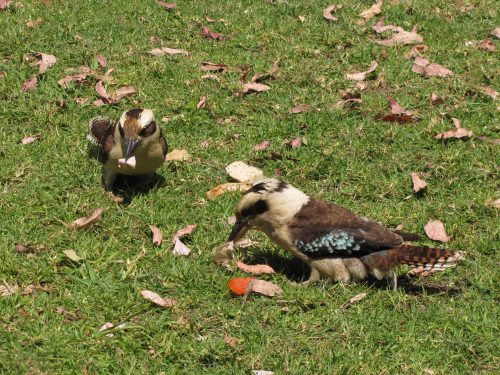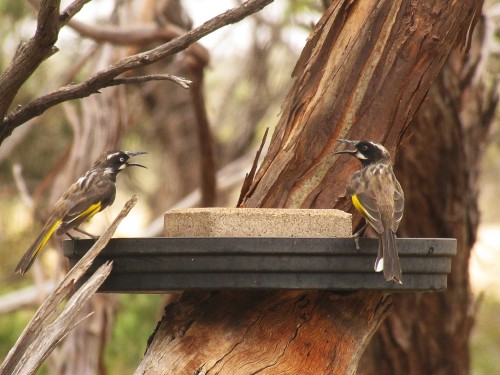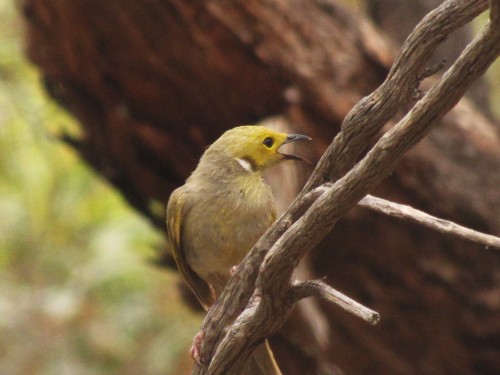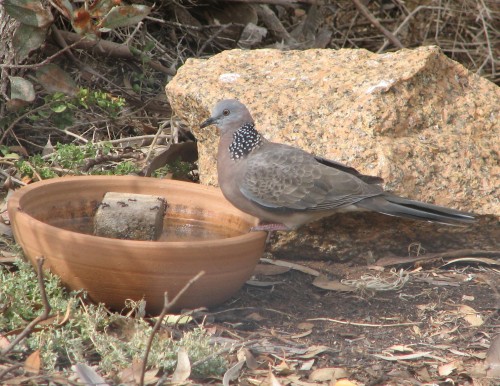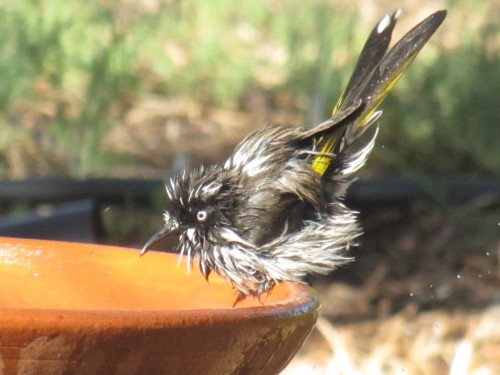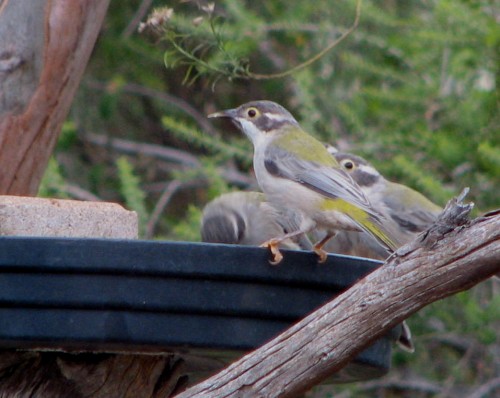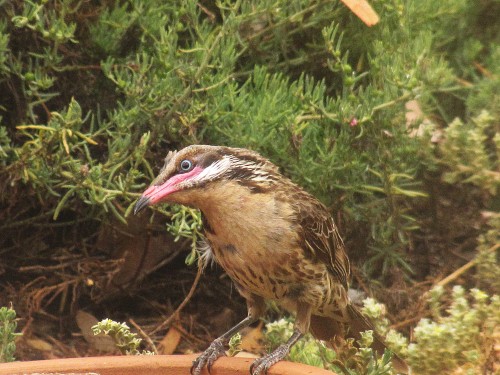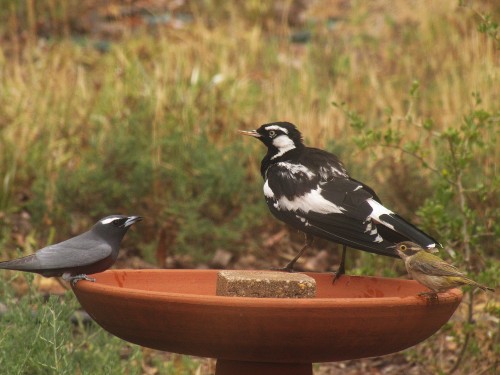Wildlife of Lane Cove National Park
Over recent years, my wife and I have visited the Lane Cove National Park just west of Chatswood in the heart of Sydney. We try to get there whenever we visit family living in Artarmon nearby. Despite being in the heart of a bustling part of the city, this park not only preserves some remnant bushland for all to enjoy, it also boasts a good range of wildlife. I am particularly interested in the birdlife – hence this website. I also take an interest in other forms of wildlife, as well as the plant life, an interest which flows over from my wife.
On a visit there last October, I managed a few photos of some of the resident birds, as well as some other wildlife. A few weeks ago I shared a photo of two Long-necked Turtles here. I have also written about the local Sulphur-crested Cockatoos and the Australian Wood Ducks I saw in the park.
One of the very common birds in this area is the Noisy Miner, shown in the photo above. This individual landed on the picnic table alongside where we were sitting. I guess it was looking for a handout of human food, just like the local Laughing Kookaburras and Brush Turkeys. Noisy Miners are certainly the most common of the Australian honeyeaters in this part of Sydney.
I have noticed on all of our visits to this park that the Eastern Water Dragon is a very commonly observed reptile in the park. I think that we have seen many of these lizards on every visit to the park. The one shown in the photo below was quite friendly and unafraid, coming up quite close to where we were sitting.
Further reading:
Lunch snatching birds at Lane Cove National Park
As I write this we are in Sydney visiting our son and his family. We enjoy visiting him because it is a precious time of blessing as we spend time with our two grandchildren, ages eight and five. It is always great to see them growing and developing. During our times here in Sydney we have limited opportunities to go birding, so any free time we have is really appreciated. On this particular trip, we have visited Lane Cove National Park on several occasions, both times for lunch. This national park is only about ten minutes away by car, depending on the volume of traffic and time of day.
On a recent visit, we set up our folding chairs in a shady spot with a good view of the river. We placed our picnic lunch on the side table of our chairs. Before we could take a bite I observed two Long-necked Turtles sunning themselves on a log protruding from the water (see photo above). I handed my binoculars to my wife so that she could have a closer look at them.
That was when we were robbed!
A cheeky Laughing Kookaburra swooped down from a nearby branch. It snatched a part of my wife’s sandwich and flew off with it. As it dropped the sandwich makings on the grass nearby, another kookaburra flew down to share in this ill-gotten booty. Not long after this, as they were squabbling over their prize, a Noisy Miner joined in the fun. Noisy Miners are one of our native honeyeater species; they can be quite aggressive towards smaller birds and they are obviously quite at home matching it with the much larger kookaburras.
My wife was incensed. She had lost a portion of her lunch to a thieving bird. Later, she read a small plaque on one of the park picnic tables. In fact, all tables have copies of the same message: “Visitors are asked not to feed the birds and animals” or words to that effect. Perhaps the rangers should also put up signs instructing the local wildlife not to snatch human food.
Naturally, we guarded the rest of our lunch very carefully. No sense in losing any more of it. A few minutes later, two Brush-turkeys came mooching around. They looked as if they also wanted a handout. In fact, I held out my empty palm towards one of them and it approached to within a few centimetres of my hand. It left disappointed.
Please do not feed the birds
I think it would be prudent of me to make mention of the fact that it is strongly recommended that people in parks, gardens and even their own gardens refrain from feeding our native birds. Most human food – especially bread – is actually quite dangerous – even deadly – for our birds. By all means, provide fresh drinking water in a birdbath, but resist the desire to feed them. It’s for their welfare.
Good birding,
Trevor
PS Go to below the comments section to subscribe to my monthly newsletter. These newsletters will contain extra news items and special insights and photos not available in my regular posts.
Birds in the heat
Here in South Australia we are experiencing our hottest summer on record. I won’t bore you with the details, but just say that we have had far too many days in the 40s (45C is equal to 113F). During such heatwaves – which can last for several days – our bird population suffers terribly. On these days the resident birds in our garden really appreciate the various bird baths we have placed in suitable locations.
Even on a warm day we get a constant parade of birds visiting the various bird baths in our garden. Our sun room overlooks several of them and this affords me an ideal location to take photos of them. Some birds still visit the water even on quite cold days – but we haven’t had many of those lately.
Probably the most common visitors would have to be the honeyeater species, including:
- Red Wattlebirds,
- White-plumed honeyeaters,
- New Holland Honeyeaters,
- Brown-headed Honeyeaters
- Singing Honeyeaters
- Spiny-cheeked Honeyeaters
Other regular visitors include:
- Australian Magpies
- White-winged Choughs
- Grey Currawong
- Australian Magpie Larks
- Crested Pigeons
- Spotted Turtledove
- Striated Pardalote
- Spotted Pardalote
- Silvereyes
- House Sparrow
- Common Starling
- Common Blackbird
The importance of water to birds
I love getting comments from my readers. Every now and then I get a really interesting one, like the one from Sue which I have quoted below.
Happy new year Trevor!
A Big thank you for maintaining your site…
I’m in suburban Adelaide, and I put a second bath into the garden when the hot weather struck early in the season. We have always had a terracotta pot pond with water lilies that allows for the bees to drink as well having a strong enough rim for some of the larger birds. The other two are just very large terracotta pot saucers, one on the ground, the other now in a raised garden bed under a deep shade tree.The ring neck dove (Spotted Turtle-dove) nested and fledged a chick in a hanging pot under the verandah.. Much cooler than her previous nest . Blackbird got it wrong and build a nest behind the fence post on the support rail .. But the iron faces west and is only shaded part of the day. She sat the nest for a full week before abandoning it, I suspect it was far too hot once the sun tracked round. Unfortunately, mid year, the neighbours had removed the large shrubs many of them had been using.
The New Holland honeyeaters, the Blackbird and the Wattlebirds have all now learnt to associate me out watering with a wet foliage cool off. The honeyeaters will actually make a fuss until I wet the bamboo down to make a cool and safe retreat then happily make use of it regardless of how close I am.
I suspect they may nest in the bamboo next year as its big enough to be a stable thicket.
All of them love it when the old fashioned rain wave sprinkler is put on.
They all seem to be learning new tricks to cope with the extra heat … with a little help from their friends.
Cheers
Sue.
Thank you, Sue, for sharing your delight in the birds in your garden.
If any of my readers would like to also share their experiences with birds in gardens – or other places for that matter, please leave a comment here on this article, or any article for that matter. You never know – I may feature your experiences in an article so everyone can read it.
Below I have included a few photos of birds at our bird baths.
Good birding,
Trevor.
Further reading:
- Time for a bath – an article about birds and other animals which have visited our bird baths.
Give the birds a treat for Christmas
Merry Christmas Everyone
I wish all of my readers a very merry and blessed Christmas, wherever you are.
I would be really pleased to get greetings from you – just use the “comments” section above.
Birds in the hot Australian sun:
Many parts of Australia are in the grips of an early, very hot summer, and this is especially so here in South Australia. Our capital city of Adelaide last week had a record December heatwave for over a hundred years with a string of 4 days over 40C. Yesterday was another very hot day at around 37C and today, Christmas Day, the forecast is for 38C. This will make it the hottest Christmas Day since 1945.
During hot conditions like these our birds suffer terribly. All of my Australian readers – and readers everywhere suffering in the hot, summer sun – I would like to encourage to buy a bird bath for their garden. Even putting a few old bowls or dishes of water around the garden is better than nothing.
We have had three bird baths strategically placed in our garden for many years. These have been placed so that we can watch from the room which we use the most. Many of the photos which I have used on this site were taken from that room, including that of a Spiny-cheeked Honeyeater shown above, and taken in the heatwave last week..
Two days ago our daughter arrived home for the Christmas break and doubled our number of bird baths. Our children have given us three new bird baths. I hope this doubles the number of photos I can take!
I hope that you have a great Christmas and a wonderful New Year.
Trevor
Further reading:
- Spiny-cheeked honeyeater on a hot day
- Make room for me – White-winged Choughs get a little crowded at the bird bath
- Time for a bath – a list of bird and non-bird visitors to our bird baths
